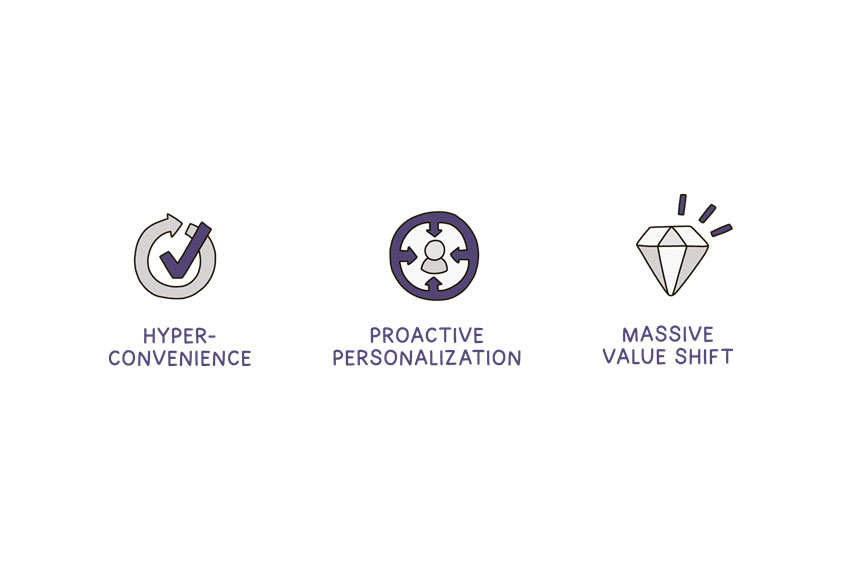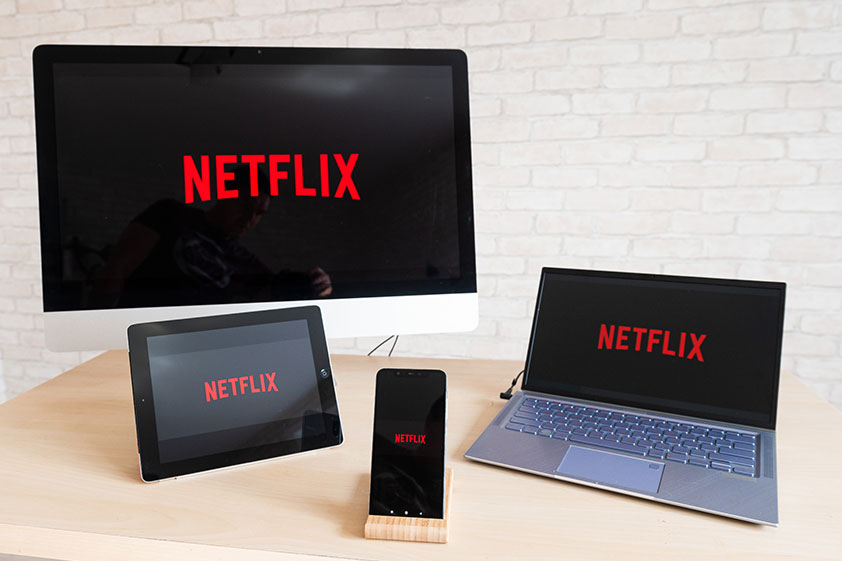
3 SECRETS TOP DIGITAL BRANDS USE TO WIN (THAT YOU CAN USE TOO)
There are some companies that seem to have digital all figured out.
Companies like Apple, Google, Amazon, Facebook, Netflix, Uber—they have created amazing customer experiences. And it can seem like nearly everybody loves them.
What are these companies doing differently?
In studying a large number of successful digital brands, we’ve observed three key patterns that they all have in common, and these patterns account for a lot of their success in generating customer love. The three patterns are:

HYPER-CONVENIENCE
One day, I was having a few after-work beers with a client, Neal Zamore, the SVP responsible for digital at Avis and Budget rental cars.
We were brainstorming how to make the car rental experience even more appealing for customers, and he coined the term “hyper-convenience” to describe the extremely high level of ease that today’s consumers expect and often receive from those winning the digital race. I’ve been using that term ever since.
Digitally driven companies allow customers to do things like deposit a check just by taking a picture, as Chase does, or order their favorite configuration of pizza simply by texting a pizza emoji, like Domino’s does.





Companies that are resonating with today’s customers are taking the effort out of the interaction at every point possible.
Meanwhile, many other legacy brands still ask their customers to stand in line, wait on hold, navigate byzantine voice menu prompts, fill out forms, repeat themselves, or sort through merchandise to find their size.
If you use the phrase, “Thank you for your patience,” with your customers, you are doing it wrong.

But hyper-convenience isn’t just about removing steps; it also means making it easy for customers to see, understand, and engage with everything your brand has to offer, providing customers what they want, when and where they want it.
Uber offers all its different services, from basic cars to town cars to delivery, within the same app and the same interface.
Netflix is available on just about every platform known to man, from Smart TVs to computers to phones to watches, and a quick login anywhere connects you to massive volumes of content.
In fact, in many Marriott hotels, when you turn on the TV, you are prompted to log in to your Netflix account, and they will deliver your subscription to you right in your hotel room. Try that with Cablevision!

PROACTIVE PERSONALIZATION
Companies that are digitally driven know where their customers are located at any given moment, what they are likely to want, how they prefer to pay, and how they want to consume what they paid for.


Gmail suggests people you might want to add as senders to a message based on its content. Then, it “reads” your incoming email to suggest possible responses.
Google’s search engine tailors your results based not only on your current location but also on past searches and browsing behavior.
Waze notices the address of your next calendar appointment, checks traffic based on where you are at the moment and alerts you when it’s time to leave to be on time.
How does your company’s personalization compare to these leaders who are setting “the bar” in your customer’s mind?

MASSIVE VALUE SHIFT
Think of customer value as an equation—how much you give your customer in exchange for how much you ask them to give you. Disrupters are innovating on both components of that equation.
Wikipedia replaces the multi-volume encyclopedia set. It offers thousands of times more content and is constantly updated—all for free.
Craigslist replaces the classified ads in the newspaper with a solution that is also far easier to search, more comprehensive and also free, at least for most listings.
Google’s broad range of services, from maps to search to spreadsheets, are not only free, but the breadth of their capabilities exceeds the capacity of a hundred libraries and thousands of dollars in software.
Evernote, Dropbox, and so many more digital services offer free versions that fully meet the needs of many customers, along with paid versions that are disruptive in their low pricing.
Amazon provides more selection than any mall, free shipping, and, in many cases, lower prices. Digital winners present what are fundamentally “better deals” to the customer.
So that’s how top brands win in today’s digital world—by adding hyper-convenience, proactive personalization and massive value. It may seem tough to figure out how to deliver all three to a customer, but there is a way to get there if you follow the right process.